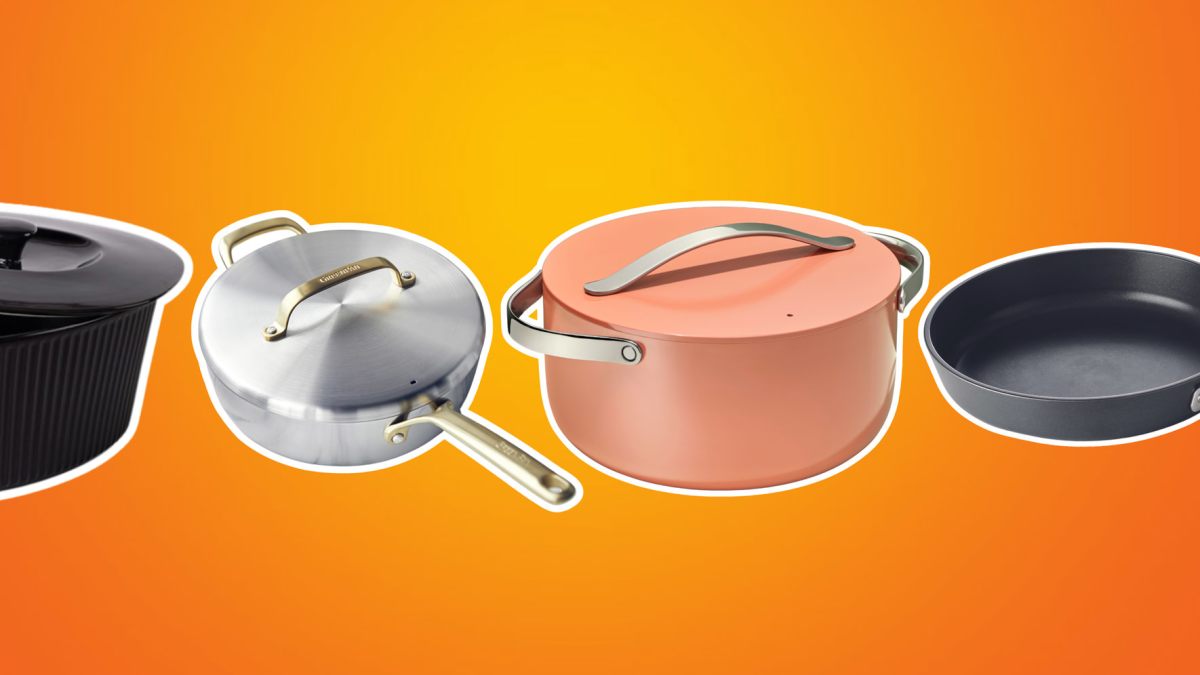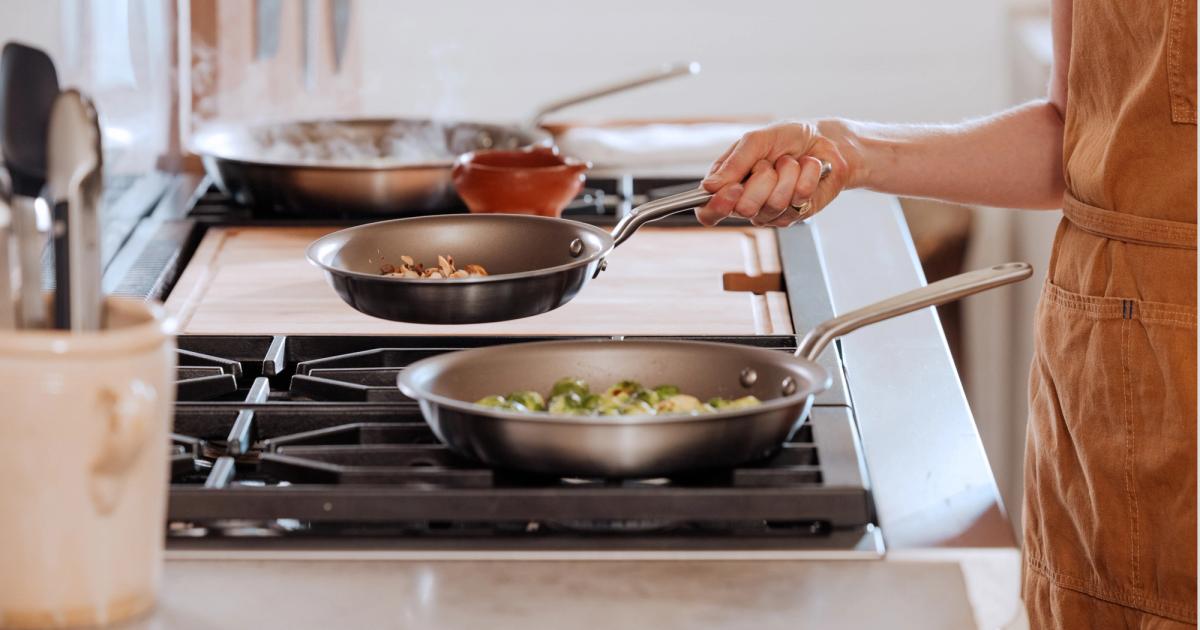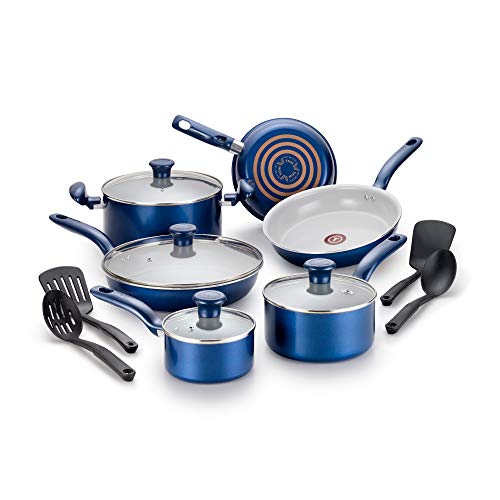Understanding Ceramic Cookware Materials

Ceramic cookware is made from a combination of clay, water, and other minerals. This mixture is then fired in a kiln at high temperatures to create the finished product. The ceramic material used in cookware is known for its durability and heat resistance, which makes it safe to use in the oven. It is important to note that not all ceramic cookware is created equal, as there are different types of ceramic materials available. Some common types include porcelain, earthenware, and stoneware. Each type has its own unique qualities and benefits, so it’s important to choose the right one for your cooking needs.
1 Different Types Of Ceramic Materials For Cookware
Ceramic cookware is available in various types of materials, each with its own unique characteristics. Some common types include porcelain, earthenware, and stoneware.
Porcelain ceramic cookware is known for its smooth surface and great heat retention. It is highly durable and resistant to scratches, making it ideal for everyday cooking.
Earthenware ceramic cookware is made from clay and has a more rustic appearance. It is not as durable as porcelain but is excellent for slow cooking and baking.
Stoneware ceramic cookware is fired at high temperatures and is known for its durability and even heat distribution. It is perfect for baking and roasting.
When choosing ceramic cookware, consider the type of material that best suits your cooking needs and preferences.
2 Benefits Of Using Ceramic Cookware In The Oven
One of the benefits of using ceramic cookware in the oven is its excellent heat distribution. Ceramic is known for its ability to evenly distribute heat, ensuring that your food cooks uniformly. This prevents hot spots and reduces the risk of burning or overcooking certain areas. Additionally, ceramic cookware retains heat well, allowing your dishes to stay warm even after being removed from the oven. This is particularly beneficial when serving meals or when you need to keep food at a desired temperature for a longer period. Overall, using ceramic cookware in the oven offers consistent and efficient cooking results.
Safety Tips For Using Ceramic Cookware In The Oven

When using ceramic cookware in the oven, it’s important to follow some safety tips to ensure the best results and prevent any accidents. First, always check the maximum temperature guidelines provided by the manufacturer for your specific ceramic cookware. Avoid sudden temperature changes by allowing the cookware to cool down before washing or placing it in the oven. It’s also important to handle ceramic cookware with care and use oven mitts or potholders to avoid burns. Lastly, avoid using abrasive cleaners or metal utensils that may scratch the ceramic surface. By following these safety tips, you can enjoy using ceramic cookware in the oven safely and effectively.
1 Maximum Temperature Guidelines For Ceramic Cookware
When using ceramic cookware in the oven, it’s important to be aware of the maximum temperature guidelines provided by the manufacturer. Different types of ceramic cookware may have varying heat resistance levels, so it’s crucial to follow the specific instructions for your cookware. Exceeding the recommended temperature can lead to damage or even breakage of the ceramic cookware. By adhering to the maximum temperature guidelines, you can ensure the longevity and safety of your ceramic cookware while enjoying delicious dishes cooked in the oven.
2 Precautions To Take When Using Ceramic Cookware In The Oven
When using ceramic cookware in the oven, there are a few precautions to keep in mind to ensure safety and prevent damage.
- Avoid sudden temperature changes: Ceramic cookware can be sensitive to extreme temperature changes. To prevent cracking or shattering, it’s important to avoid placing hot ceramic cookware directly on a cold surface or immersing it in cold water immediately after being in the oven. Allow the cookware to cool down gradually before handling or cleaning.
- Use protective padding: To protect both your hands and countertops, it’s recommended to use oven mitts or silicone trivets when handling hot ceramic cookware. This will provide a barrier and prevent accidental burns or damage to surfaces.
By taking these precautions, you can enjoy using your ceramic cookware in the oven safely and preserve its longevity. Remember to always refer to the specific manufacturer’s instructions for your cookware to ensure proper usage and care.
Popular Ceramic Cookware Brands

When it comes to choosing ceramic cookware, there are several popular brands that have gained recognition for their quality and durability. One such brand is Le Creuset, known for their vibrant enamel-coated ceramic cookware that not only performs well in the oven but also adds a pop of color to the kitchen. Another popular brand is GreenLife, offering an affordable range of ceramic non-stick cookware that is both oven-safe and eco-friendly. Additionally, Cuisinart and Calphalon are renowned for their ceramic-coated cookware lines, which combine the benefits of ceramic with the reliability of established kitchenware brands. These brands offer a variety of options to suit different cooking needs and styles.
1 Overview Of Top Ceramic Cookware Brands
When it comes to choosing ceramic cookware, there are several popular brands that have gained recognition for their quality and durability. One such brand is Le Creuset, known for their vibrant enamel-coated ceramic cookware that not only performs well in the oven but also adds a pop of color to the kitchen. Another popular brand is GreenLife, offering an affordable range of ceramic non-stick cookware that is both oven-safe and eco-friendly. Additionally, Cuisinart and Calphalon are renowned for their ceramic-coated cookware lines, which combine the benefits of ceramic with the reliability of established kitchenware brands. These brands offer a variety of options to suit different cooking needs and styles.
2 Features To Look For In High-quality Ceramic Cookware
When choosing high-quality ceramic cookware, there are two key features to look for. First, consider the thickness and durability of the ceramic coating. A thicker coating will provide better heat distribution and prevent scratching or peeling over time. Look for cookware that has multiple layers of ceramic coating for added durability. Second, check for a sturdy and well-constructed handle. A comfortable and heat-resistant handle will ensure safe and convenient handling of the cookware. Additionally, look for cookware that is compatible with different heat sources, including induction cooktops, for maximum versatility.
How To Care For Ceramic Cookware

To ensure the longevity and performance of your ceramic cookware, proper care and maintenance are essential. Here are some tips to keep your ceramic cookware looking and working its best:
- Hand washing: It is recommended to hand wash your ceramic cookware using mild dish soap and a soft sponge or cloth. Avoid using abrasive scrubbers or harsh cleaning agents, as they can damage the ceramic coating.
- Avoid high heat: When cooking with ceramic cookware, avoid using high heat settings as it can cause the ceramic coating to deteriorate over time. Stick to medium or low heat for best results.
- Non-metal utensils: Use non-metal utensils, such as silicone, wood, or plastic, to avoid scratching the ceramic surface. Metal utensils can cause damage to the coating.
- Storing properly: To prevent scratching or chipping, store your ceramic cookware in a safe and secure location. Use protective padding or cloth between pots and pans to avoid any potential damage.
- Seasoning: Some ceramic cookware may benefit from occasional seasoning. Follow the manufacturer’s instructions for seasoning your cookware as recommended.
By following these care tips, you can ensure that your ceramic cookware remains in great condition and lasts for years to come.
1 Cleaning And Maintenance Tips For Ceramic Cookware
To keep your ceramic cookware looking its best, proper cleaning and maintenance are essential. Here are some tips to ensure the longevity of your ceramic cookware:
- Hand wash: It is recommended to hand wash your ceramic cookware using mild dish soap and a soft sponge or cloth. Avoid using abrasive scrubbers or harsh cleaning agents, as they can damage the ceramic coating.
- Non-metal utensils: Use non-metal utensils, such as silicone, wood, or plastic, to avoid scratching the ceramic surface. Metal utensils can cause damage to the coating.
- Avoid high heat: When cooking with ceramic cookware, stick to medium or low heat settings to prevent the ceramic coating from deteriorating over time.
- Storing properly: To prevent scratching or chipping, store your ceramic cookware in a safe and secure location. Use protective padding or cloth between pots and pans to avoid any potential damage.
By following these cleaning and maintenance tips, you can ensure that your ceramic cookware remains in excellent condition and performs optimally for years to come.
2 Storing Ceramic Cookware Properly To Prolong Its Lifespan
Storing ceramic cookware properly is crucial for maintaining its longevity. To prolong the lifespan of your ceramic pots and pans, it is important to follow a few key steps. First, ensure that the cookware is completely dry before storing to prevent moisture-related damage. Use protective padding or cloth between each piece to avoid scratching or chipping. It’s also a good idea to store ceramic cookware in a cool, dry place away from direct sunlight or extreme temperatures. By taking these precautions, you can extend the lifespan of your ceramic cookware and enjoy it for years to come.
Alternatives To Ceramic Cookware For Oven Use

When it comes to using cookware in the oven, there are several alternatives to ceramic cookware that you can consider. One popular option is cast iron, known for its excellent heat retention and durability. Stainless steel is another good choice, as it is resistant to rust and corrosion. Additionally, you can opt for glass or enameled cookware, which can withstand high oven temperatures. Each of these alternatives has its own advantages and disadvantages, so it’s essential to choose the one that best fits your cooking needs and preferences.
1 Exploring Other Oven-safe Cookware Materials
When it comes to using cookware in the oven, ceramic is not the only option available. There are several other materials that are known for their oven-safe properties. One popular alternative is cast iron cookware. Cast iron is known for its excellent heat retention and even heat distribution, making it ideal for baking and roasting. Stainless steel is another great option, as it is resistant to rust and corrosion, making it durable and long-lasting. Glass and enameled cookware are also oven-safe options that can withstand high temperatures. Each of these materials has its own unique benefits and it’s important to choose the one that suits your cooking needs and preferences.
2 Pros And Cons Of Using Ceramic Vs. Other Cookware Options
When comparing ceramic cookware to other options, such as stainless steel or non-stick pans, there are a few pros and cons to consider. One of the main advantages of ceramic cookware is its non-stick surface, which allows for easy food release and effortless cleaning. Additionally, ceramic cookware is generally safe to use and does not leach harmful chemicals into food. However, it’s important to note that ceramic cookware can be prone to chipping or cracking if not handled properly. Additionally, it may require careful handling and lower cooking temperatures compared to other materials. Ultimately, the choice between ceramic and other cookware options depends on personal preferences and cooking style.
Conclusion

In conclusion, ceramic cookware is a versatile and safe option for oven use. With its ability to withstand high temperatures and even heat distribution, ceramic cookware allows for excellent cooking performance. However, it is important to follow safety guidelines, such as avoiding sudden temperature changes and properly caring for the cookware to prevent chipping or cracking. By choosing high-quality ceramic cookware and using it correctly, you can enjoy the benefits of oven cooking without compromising safety or food quality. So, go ahead and confidently use ceramic cookware in your oven for delicious meals.
1 Recap Of Ceramic Cookware Safety Tips
To recap the safety tips for using ceramic cookware in the oven, it is important to ensure that the cookware is oven-safe and follow the manufacturer’s guidelines for maximum temperatures. Avoid sudden temperature changes, such as placing a hot ceramic dish in cold water, as it can cause the cookware to crack. When handling hot ceramic cookware, use oven mitts or pot holders to protect yourself from burns. Proper cleaning and maintenance, such as avoiding abrasive cleaners and storing the cookware properly, will help prolong its lifespan. Always prioritize safety when using ceramic cookware in the oven.
2 Final Thoughts On Using Ceramic Cookware In The Oven
In conclusion, using ceramic cookware in the oven can be a safe and convenient option for cooking. With its non-toxic and non-leaching properties, ceramic is a popular choice for many home cooks. However, it is important to follow the manufacturer’s guidelines and avoid sudden temperature changes to prevent cracking. With proper care and maintenance, ceramic cookware can last for a long time and provide excellent heat distribution for delicious meals. Consider investing in high-quality ceramic cookware from reputable brands to ensure the best cooking experience. Remember, prioritizing safety and proper usage is key when using ceramic cookware in the oven.
FAQ About Can Ceramic Go In Oven: Ceramic Cookware Safety Tips
Q: Can ceramic go in the oven?
A: Yes, most ceramic cookware is oven-safe. However, it’s important to check the manufacturer’s guidelines on the specific cookware you have to ensure it can withstand oven temperatures.
Q: What are the safety tips for using ceramic cookware in the oven?
A:
- Avoid sudden temperature changes by placing ceramic cookware in a cold oven and allowing it to preheat gradually.
- Use oven mitts or gloves when handling hot ceramic cookware to prevent burns.
- Do not place ceramic cookware directly on a stovetop burner.
- Avoid using ceramic cookware with cracks or chips in the oven as it can lead to breakage.
Q: What is the maximum temperature ceramic cookware can withstand in the oven?
A: Different ceramic cookware can have varying temperature limits. Always refer to the manufacturer’s instructions for the specific cookware. In general, most ceramic cookware can withstand temperatures up to 500-600 degrees Fahrenheit.
Q: Can ceramic cookware be used under a broiler?
A: Not all ceramic cookware is suitable for use under a broiler. Check the manufacturer’s recommendations before using ceramic cookware under a broiler to prevent damage.
Q: How should ceramic cookware be cleaned after oven use?
A:
- Allow the ceramic cookware to cool before cleaning to avoid thermal shock.
- Hand wash ceramic cookware with warm, soapy water and a non-abrasive sponge.
- Avoid abrasive cleaners and metal utensils that can scratch the ceramic surface.
- Dry the ceramic cookware thoroughly before storing to prevent mold or mildew growth.
Q: Can ceramic cookware be used in a microwave oven?
A: Yes, most ceramic cookware is microwave-safe. However, always check the manufacturer’s guidelines to ensure compatibility with microwave use to prevent damage to the cookware or the microwave.

Johnny Knuckles Knock-out BBQ is a culinary haven for barbecue enthusiasts, offering a fusion of traditional BBQ and tantalizing street fare. Our secret to delivering mouthwatering dishes lies in our meticulous preparation process. Each cut of meat is lovingly hand-rubbed and slow-smoked over 100% hardwood, creating a symphony of flavors that will leave your taste buds dancing. Whether planning a special event or simply craving an unforgettable meal, Johnny Knuckles Knock-out BBQ is here to elevate your dining experience. Our catering services are designed to bring the sizzle and aroma of our delectable BBQ to your event, ensuring that every guest leaves with a full belly and a smile.